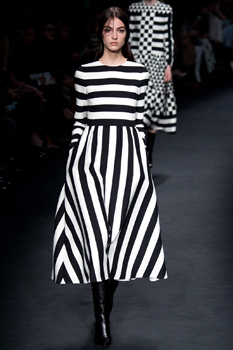Product Description
Velten Vordamm Keramik / Bauhaus Ceramics Black and White stripe Vase c. 1920


STEINGUTFABRIKEN VELTEN-VORDAMM Werk Velten, Germany
Vase c. 1920
Handpainted and glazed earthenware
Marks: VELTEN-VORDAMM company logo, 42
Similar work illustrated: Keramik und Bauhaus, Klaus Weber et al., exhib. cat. (Berlin: Bauhaus-Archiv, 1989), p. 229, illus. 289.
H: 7″
Velten Vordamm Keramik / Bauhaus Ceramics Black and White stripe Vase c. 1920
Joseph Maria Olbrich (1867-1908) Austria
Clarfeld & Springmeyer Hemer (Westfalen), Germany
Ludwig Ziech Vereinigter Silberbesteckfabrik Hamburg, Germany
Cake Server, 1901.
Silvered alpaca with JO (J. Olbrich) monogram and stylized linear motif .
Marks: A.B.S.Z. 60
Illustrated: Joseph M. Olbrich 1867-1908, Eckhart G. Franz, et al., exhib. cat. (Darmstadt: Mathildenhöhe, 1983), p. 346.
For other examples of this service see: Bestecke des Jugendstils: Art Nouveau Knives, Forks and Spoons, Barbara Grotkamp-Schepers and Reinhard W. Sänger (Stuttgart: Arnoldsche, 2000), p. 100, illus. 104; Catalogue Museum Künstlerkolonie Darmstadt, Klaus Wolbert et al. (Darmstadt: Institut Mathildenhöhe, n.d.), illustr. 306, p. 198; Das Deutsche Silber-Besteck 1805-1918: Biedermeier – Historismus – Jugendstil, Reinhard W. Sänger (Stuttgart: Arnoldsche Verlagsanstalt GmbH, 1991), pp. 176-180.
L: 10 5/8″ x W: 2 9/16″
Price: $3,750
French Art Deco “Heptagon” clip / brooch set with a large fancy cut madeira citrine and 8 baguette madeira citrines all set in 18K gold, signed GA in a diamond French touch mark, French Eagle’s head mark for 18k gold, c. 1935
